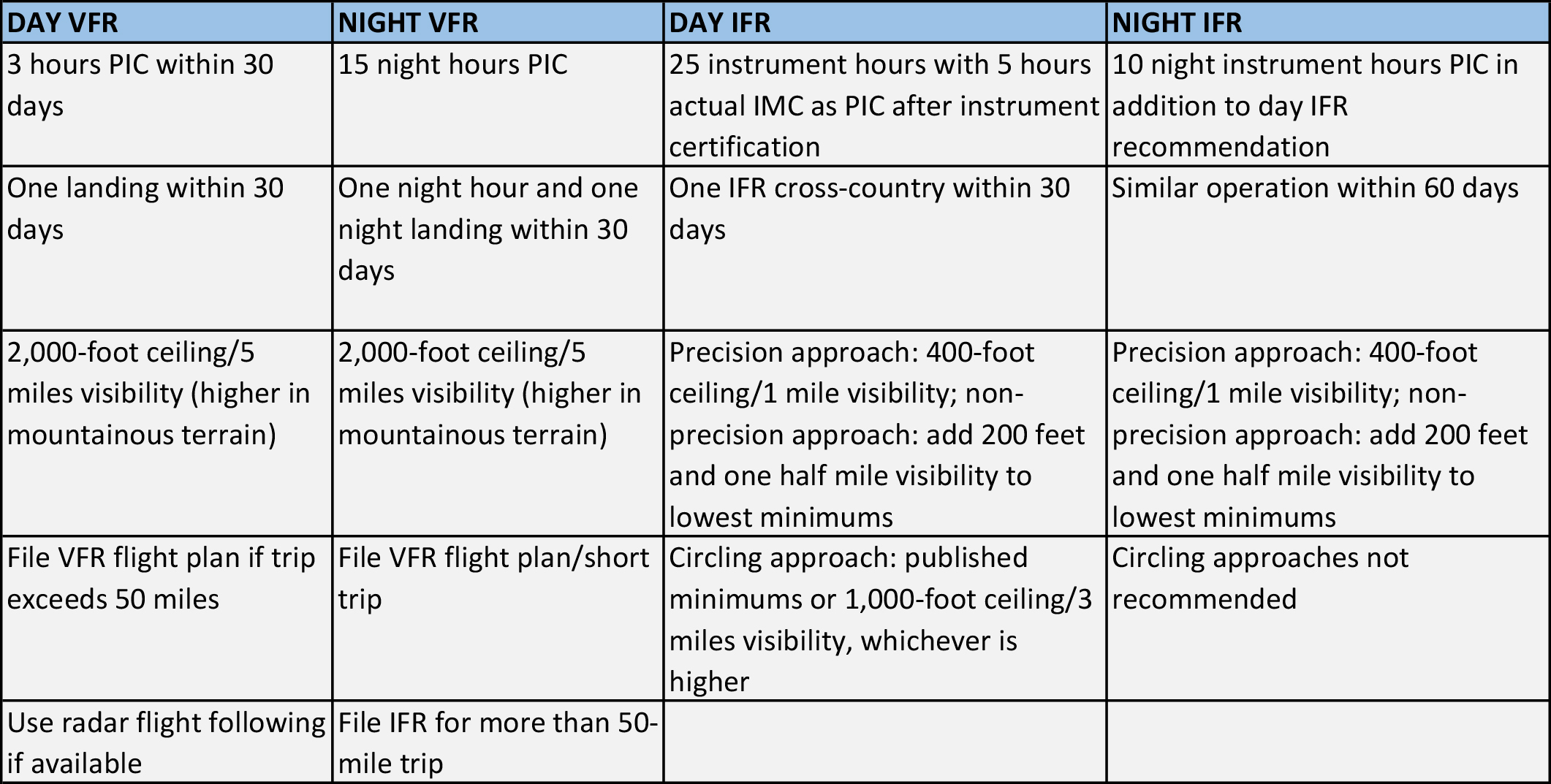Be Conservative
Safety SPOTLIGHT: Volunteer Pilots

A volunteer flight requires additional flight planning considerations beyond those for a regular cross-country flight. It’s possible that you’ll pick up your passenger from another location, which means you have to flight plan from your airport to your passenger’s departure point. This requires in-depth fuel and weather contingency planning and ensuring you have the correct aeronautical charts for all legs of the flight.
You may also be asked to fly into unusual environments such as busy terminal areas, mountain or coastal airports, and over hostile terrain. This means you’ll need to sharpen your preflight pencil and prebrief on noise abatement, terminal layout/FBO location, runway layout and condition, nearby airspace, survival equipment, and clothing appropriate for terrain being flown over, to name a few examples.
You’ll also need to take another look at your ability to fly the requested route in terms of your training and proficiency.
Also, practice flight planning decision making with several interactive scenarios in the Public Benefit Flying online course.
Example of Volunteer Pilot Organizations’ Recommended Minimums

Develop Your Personal Minimums
Volunteer pilot organizations typically specify minimums based on the type of flying required.
For example, VFR observation flights such as animal count flights should never be conducted in
marginal visual meteorological conditions (VMC), and some organizations may have restrictions on single-engine night and overwater flights. Also, develop a personal minimums checklist that provides a safety net beyond basic currency.
Get started with the AOPA Air Safety Institute’s VFR and IFR personal minimums contracts.
Note: Check the volunteer pilot organization’s minimums as they may be more restrictive than the ones you’ve set for a personal flight.
Accident Case Study: Public Benefit Flying—Beechcraft Bonanza – August 12, 2008 (South Easton, Massachusetts)
Your total flight time does not matter if you’re not proficient, particularly when facing a high workload in IMC. This case study from the Public Benefit Flying course, illustrates the importance of setting appropriate personal minimums and staying proficient.
Compassion Call Sign
 The Air Care Alliance’s international aircraft call sign “COMPASSION” is approved by the
International Civil Aviation Organization (ICAO) and can be used by pilots conducting public benefit flights to indicate to air traffic control (ATC) the general nature of the flight. The call sign cannot be used in certain situations such as positioning or ferry flights, or for routine personal or business flights. Detailed instructions are included in the Public Benefit Flying online course and on the ACA website. While some groups use proprietary call signs such as “Angel Flight” and “CAP,” which are also understood and recognized by ATC, groups that do not have or use proprietary call signs, including public benefit flights that don’t transport patients such as environmental, veteran, and educational flights, may use the “COMPASSION” call sign.
The Air Care Alliance’s international aircraft call sign “COMPASSION” is approved by the
International Civil Aviation Organization (ICAO) and can be used by pilots conducting public benefit flights to indicate to air traffic control (ATC) the general nature of the flight. The call sign cannot be used in certain situations such as positioning or ferry flights, or for routine personal or business flights. Detailed instructions are included in the Public Benefit Flying online course and on the ACA website. While some groups use proprietary call signs such as “Angel Flight” and “CAP,” which are also understood and recognized by ATC, groups that do not have or use proprietary call signs, including public benefit flights that don’t transport patients such as environmental, veteran, and educational flights, may use the “COMPASSION” call sign.

